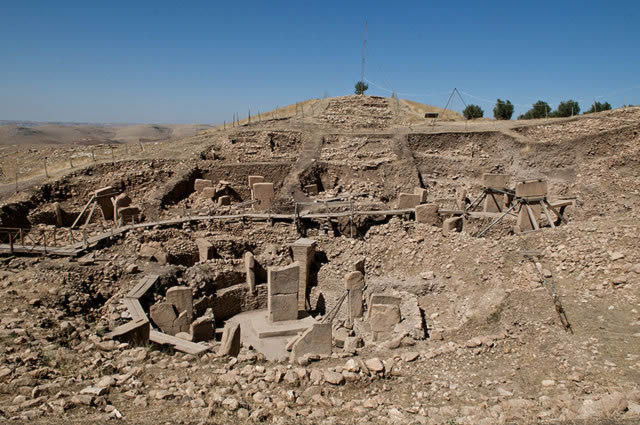Gobekli Tepe
Prehistoric Anatolia 9130-7370 BC
At some point during the tenth millennium BC hunter-gatherers in Southeastern Anatolia came together to construct one of the world's very first temple complexes. Gobekli Tepe sits on a plateau that shows extensive archaeological evidence of human activity. One theory has it that the complex was built as a spiritual centre first, and then agriculture was introduced in order to feed increasing numbers of religious pilgrims. This in turn is thought to have led to the ability of the people to settle in one place - establishing the dawn of civilization.

The scale of the site is remarkable for this early date, involving construction of multiple temples and the movement and carving of stone pillars that weigh up to 50 tons each, some five thousand years before the invention of the wheel. It speaks of a re-application of the abilities of planning and organisation that had been developed for one purpose, namely hunting, and then later re-purposed in an early form of project management.
